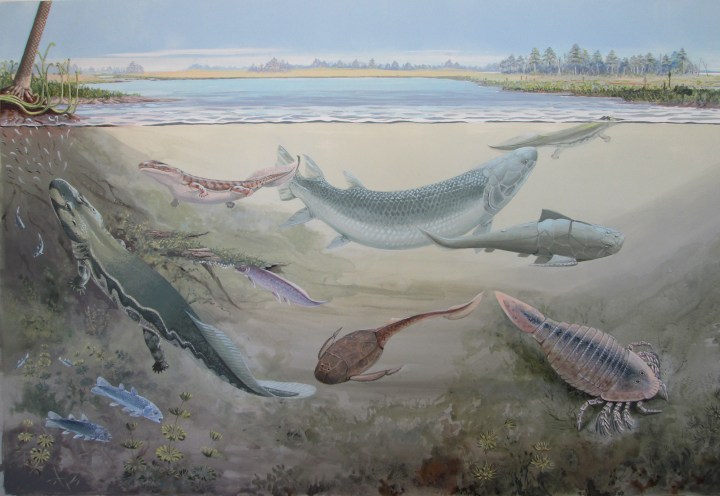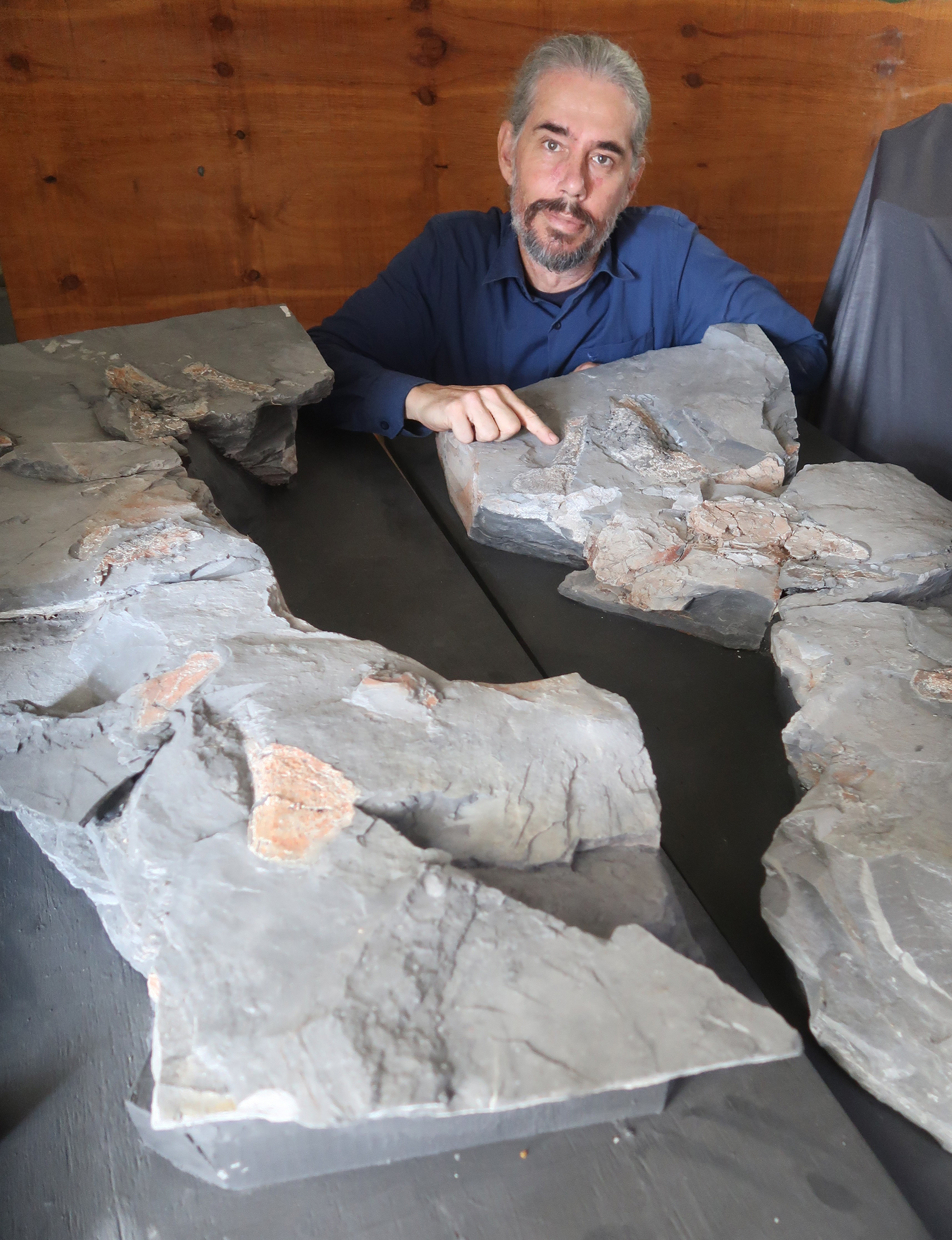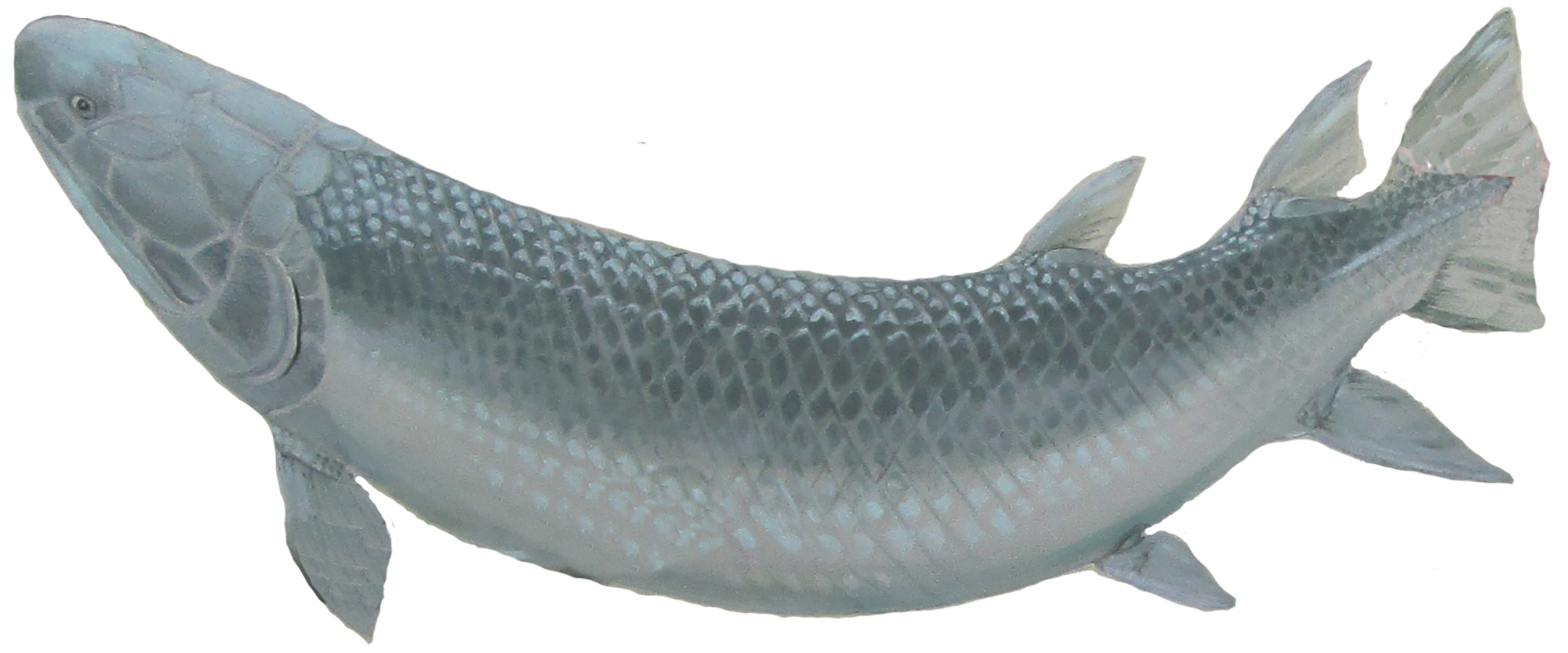CREATURE OF THE LAGOON
Remains of prehistoric 3-metre fish discovered in Eastern Cape

Fossilised bones of an apex predator, an extinct lobe-finned fish that lived 360 million years ago, were discovered near present-day Makhanda on Waterloo farm.
At more than 3m long, this apex predator terrorised the lagoons it prowled and probably ate our ancestors too.
Hyneria udlezinye lived 360 million years ago during the period known as the Devonian and its existence is now known thanks to a prehistoric jigsaw puzzle that took 37 years to piece together.
The story of the biggest bony prehistoric fish ever found in southern Africa was revealed in the latest issue of PLOS One.
The fossilised bones of this predator, an extinct lobe-finned fish, were found not far from present-day Makhanda on Waterloo farm in Eastern Cape. Hundreds of millions of years ago, this area was a lagoon where fresh water flowed into the sea. It was in the freshwater riverine section of the lagoon that Hyneria is believed to have hunted.
With rows of sharp teeth and fangs, Hyneria probably fed on fish and possibly aquatic tetrapods — four-limbed, air-breathing creatures that hung out in the shallows of lagoons and that scientists believe were our deep ancestors.
“Tetrapods were adapted to shallow waters, and while they were in this shallow water the Hyneria were not able to get to them. But at times the tetrapods would have had to have crossed more open water and Hyneria udlezinye would have lain in wait and lunged for them,” explains palaeontologist Dr Rob Gess, of the Albany Museum, in Makhanda, who was responsible for the discovery of the new species.
Gess knows that tetrapods were living in close proximity to Hyneria because he has found their fossils in the same slabs of rock.
Hyneria would have shared the lagoon with other kinds of now extinct fish. There would have been armour-plated fish, spiny-finned fish and other lobe-finned fish like coelacanths.

Scientific reconstruction of the skull and shoulder girdle of Hyneria udlezinye from Gess & Ahlberg 2023. (Image: Supplied)
Visit Daily Maverick’s home page for more news, analysis and investigations
But this terror of the lagoon wasn’t the biggest predator out there.
Further out to sea would have been larger sharks that sometimes came into the estuary, and left traces of their existence in the fossil record at Waterloo farm.
Sharks, however, are not bony fish.
Hyneria, explains Gess, would have lived in a world far different to the one of today.
Back then, Makhanda was at the edge of the supercontinent of Gondwana, and was so far south it lay in the polar circle.
“So with it being in the polar circle, there would have even been days of complete darkness. And winters would have been cold, although during the Devonian, the world was a lot warmer than it is today,” Gess explains.
Warm currents might have also raised the temperature of this lagoon, while inland there might have been glaciers.
Gess’s hunt for the mystery fish began in 1985 when while examining rocks that had come from roadworks close to Makhanda he noticed unusual fossilised scales and bones.
“This was not a flash in the pan, it was a long and rigorous process,” says Gess.
Over the years, more and more of these unusual bones and scales were collected and stored at the Devonian collection of the Albany Museum in Makhanda.
Eventually, with enough material in the collection, Gess and Professor Per Ahlberg, the co-author of the paper and a lobe-finned fish expert, began piecing together the fish.
“We don’t have a single set of bones from one individual, but we were confident that they all come from one species of fish.”
Work first started at the Albany Museum and was completed at Ahlberg’s lab at Uppsala University in Sweden. The software programme Photoshop was used to create an image of the fish.
The discovery of the predator has provided a better understanding of this family of fish and Gess and Ahlberg now believe they arose in Gondwana and migrated to the other supercontinent, Euramerica. This latest discovery adds to the importance of the polar region of Gondwana in understanding early evolution.
“The significance of the Waterloo site is that it is from the then polar region,” explains palaeontologist Professor Bruce Rubidge, who was not involved in the research.
“Most of the interesting fossils from the Devonian period had come from sites that were from what were then the equatorial regions, near the equator. So we just thought that all these different forms of life originated in the equatorial region, but Rob’s discoveries have shown that they were found in the polar regions and that they could have easily originated in the polar regions as well.”
For Gess, Waterloo farm is the palaeontology site that for two decades keeps giving and giving.
The site has provided a rare peek into an ecosystem of which little trace remains today.
“It is one of the few sites in the world of its age where you can actually put together an entire ecosystem without having to look at other sites.
“Now we have had 26 new species come out of Waterloo farm and it is by no means the last,” says Gess. DM




















 Become an Insider
Become an Insider
Comments - Please login in order to comment.